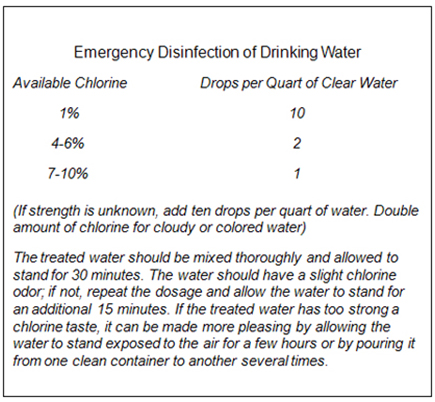Q: What is chlorine bleach?
A: Chlorine bleach is “chlorine to go,” providing a convenient vehicle for delivering the germ-busting power of chlorine chemistry.
Chemically speaking, chlorine bleach is a water solution of sodium hypochlorite. Common household laundry bleach, used to whiten and disinfect laundry, is typically either 5.25 percent (“regular strength”) or 6 percent sodium hypochlorite (“ultra strength”). As a surface disinfectant, chlorine bleach is approved by the U.S. Environmental Protection Agency and the U.S. Department of Agriculture for use in safe food production. It is also used to help prevent the spread of infections in homes, hospitals, nursing homes, schools and day care facilities.
Q: How is chlorine bleach made?
A: Chlorine bleach is made by mixing chlorine and caustic soda (sodium hydroxide), in a kind of reversal of the chlor-alkali process.
Learn more...
Q: How can I use chlorine bleach to disinfect surfaces in my home?
A: A chlorine bleach solution can be used as a handy, inexpensive household disinfectant. It can be applied in the kitchen to food preparation surfaces, like countertops and cutting boards, to destroy foodborne germs like e.coli and salmonella. Bathroom surfaces may be sanitized using chlorine bleach, as can hard surfaces in the sick room. During flu season,
disinfecting commonly touched surfaces, such as door knobs and dials, with chlorine bleach solution can help prevent the spread of the flu virus among family members.
To use chlorine bleach for general surface disinfection, first wash the surface with hot, soapy water to clean. Thoroughly rinse off soap. Disinfect by applying a fresh mixture of 1 tablespoon of household bleach in one gallon of cool water. Allow to air dry.
Always read and follow instructions on the labels of bleach containers and other household cleaners.
Click here for more tips help ensure that you are handling and using your chlorinated household products safely.
Q: How can I use chlorine bleach to prepare emergency drinking water supplies?
A: Regular, unscented household bleach can be used to disinfect water. The procedure to be followed is usually written on the label. If not, find the percentage of available chlorine on the label and use the information in the following tabulation and mixing directions from
U.S. EPA as a guide.

Q: How can I use chlorine bleach to clean up after flooding?
According to the
Water Quality & Health Council website, if you have experienced any water accumulation in your home, it is important to remember that not all water damage is visible. Since flood water may contain bacteria that can cause serious illnesses, it is vital to clean and disinfect your home and personal belongings that may have been contaminated. To ensure that your home and personal belongings are as clean and safe as possible, please follow these simple, but important, cleaning tips:
- Act quickly to avoid mildew and odor.
- Remove all loose dirt and debris.
- Use a chlorine bleach disinfecting solution (3/4 cup of household liquid bleach to 1 gallon of water) to wash any walls, floors, or other surfaces touched by flood waters.
- Keep area wet for 2 minutes (2 to 10 minutes for exterior areas), then rinse thoroughly and dry.
Be sure to clean and disinfect all contaminated surfaces, both interior and exterior.
- Interior: walls, counters and floors.
- Exterior: outdoor furniture, patios, decks and playground equipment.
- Kitchen Items: dishes, glassware and utensils.
Don't forget about clothing. You can also remove mildew and germs from clothing by washing them with chlorine bleach.
- Check clothing labels to make sure they are machine washable and colorfast.
- For a standard-size washing machine, use one cup chlorine bleach per load to disinfect clothing and remove odors.
When using a disinfecting solution to clean up after a flood, make sure to read the product’s label, and ALWAYS remember to:
- Wear gloves and protective clothing. Do not touch your face or eyes.
- Change the disinfecting solution often and whenever it is cloudy.
- Be thorough. Wash and dry everything well.
Q: How can I use chlorine bleach to disinfect a private drinking water well?
A: Private wells can be disinfected using chlorine bleach, according to
these directions from the Water Quality & Health Council website.
Q: Is using bleach or other chlorine disinfectants bad for the environment?
A: Handled properly, consumers can safely use bleach without significant environmental effects. As it reacts with germs and stains, between 95 and 98 percent of it chlorine bleach breaks down and turns back into salt water. Importantly, waste water treatment facilities use chlorine disinfectants to destroy oxygen-robbing contaminants in wastewater, helping to preserve the quality of our nation’s rivers and streams into which the treated wastewater is discharged.